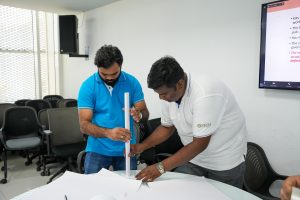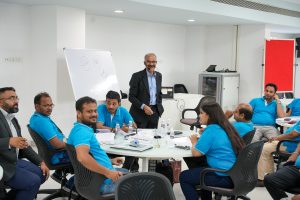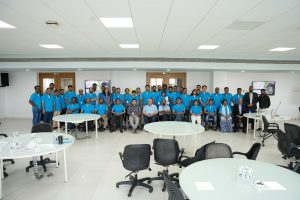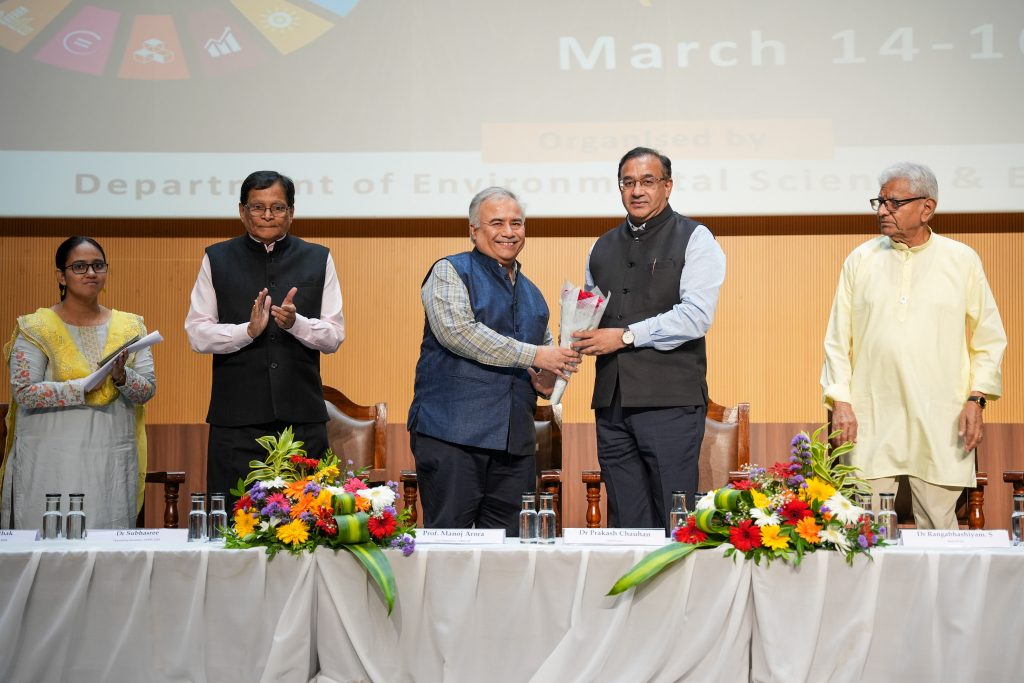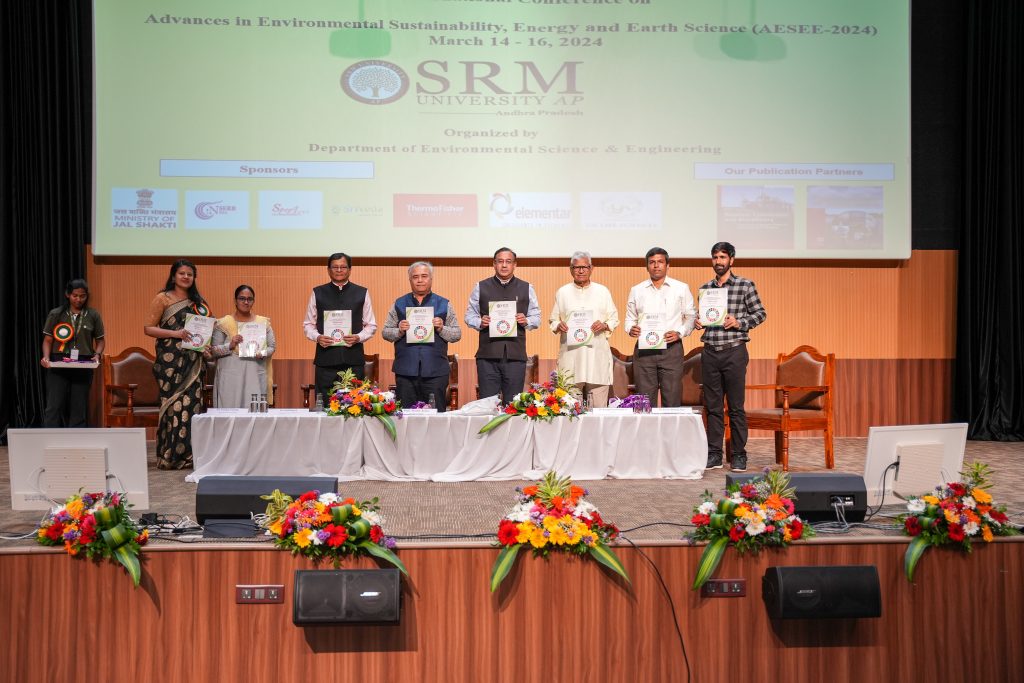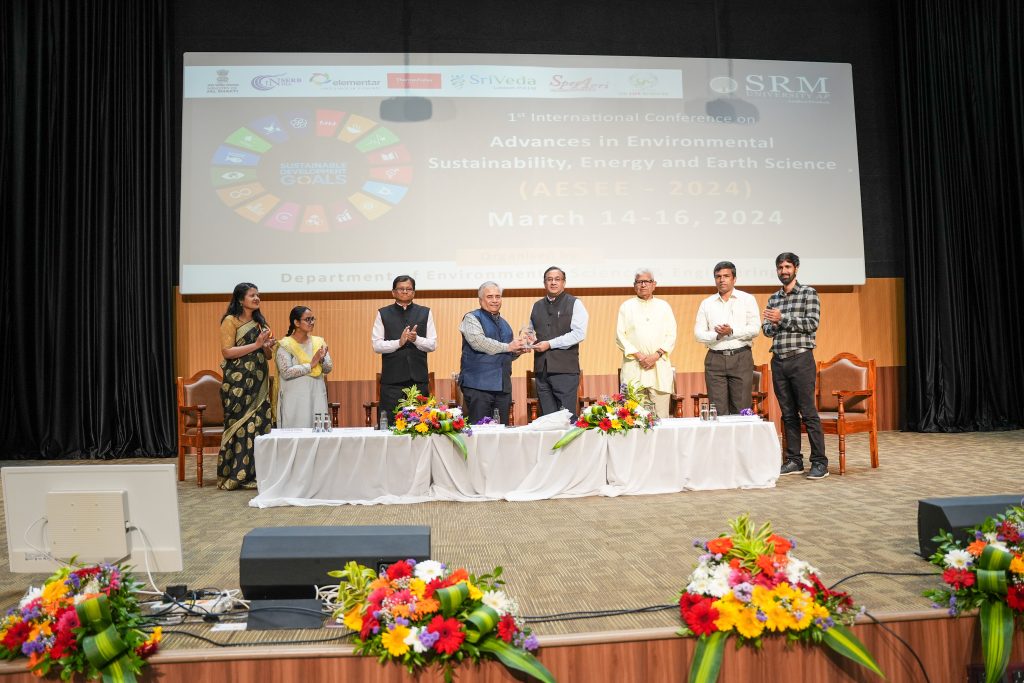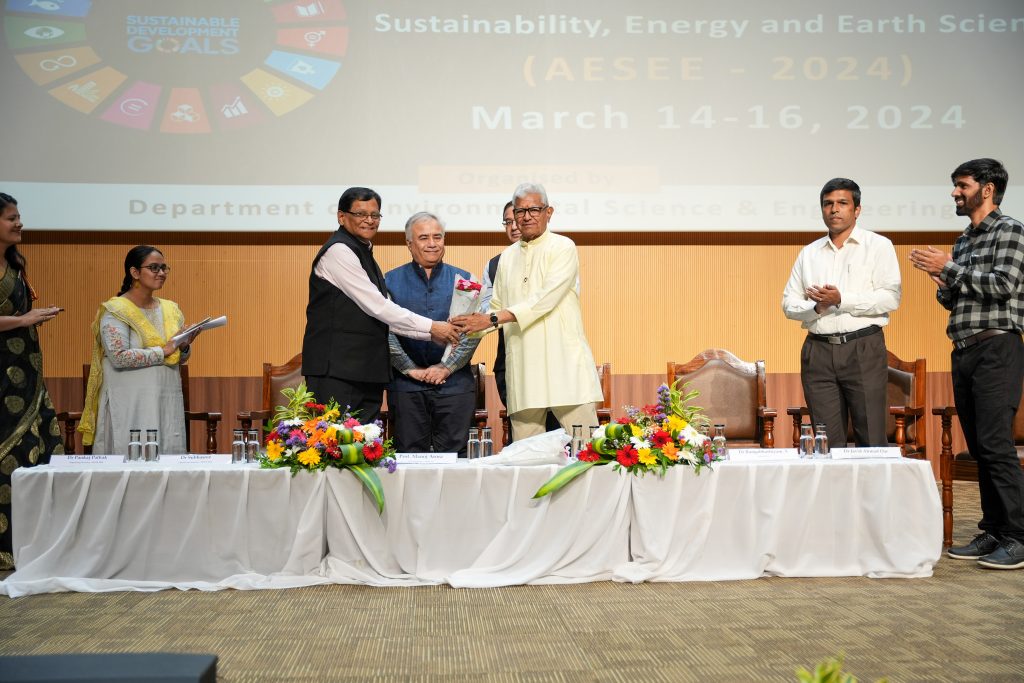Fishing Community Perspectives: NAOP Convention Insights

The Department of Psychology at SRM University-AP is pleased to announce Dr Dhamodharan’s pivotal insights, which surfaced at the culmination of the 33rd Annual Convention of the National Academy of Psychology (NAOP), orchestrated by the Department of Applied Psychology at GITAM School of Humanities and Social Sciences, Vishakhapatnam. Dr Dhamodhran, Assistant Professor at the Department of Psychology published his paper, titled “A Study of Fishing Community Parents’ Perspectives on Children’s Education, Health, and Discipline,” which has received profound attention for its insightful analysis.
Abstract:
The Sustainable Development Goals (SDGs) prioritise addressing poverty, promoting good health, and ensuring quality education, among other objectives. However, coastal villages often experience profound socio-economic, financial, and educational disadvantages, leading to recurring financial hardships. The literacy levels within fishing communities are notably deficient, exacerbating challenges in accessing fundamental amenities such as clean drinking water, adequate shelter, educational opportunities, and general well-being. The pervasive poverty and vulnerability prevalent in these areas significantly impede children from fishing villages from regularly attending school, thereby impacting their overall health, educational attainment, and mental well-being. The present study explains the fisher community’s parental perceptions about children’s education, health, and corporal punishment. A cross-section design was used. Samples were selected from four clusters (N = 100, each cluster = 25) from Tamil Nadu and Puducherry. A semi-structured interview method was used. The data were analysed with SPSS and thematic analysis. The result of the study indicates that most of the fisher parents are uneducated, and parents give importance to their children’s education, health, and career choices. Lack of proper income, lack of awareness about academic guidance, corporal punishment, and child rights in the community. The study suggests developing more intervention programmes at the family, school, and community levels to improve the fishing community families and the well-being of the children.
- Published in Departmental News, News, Psychology News
Igniting Entrepreneurial Sparks: Varsity Hosts Entrepreneurship Bootcamp 1.0 for Young Innovators
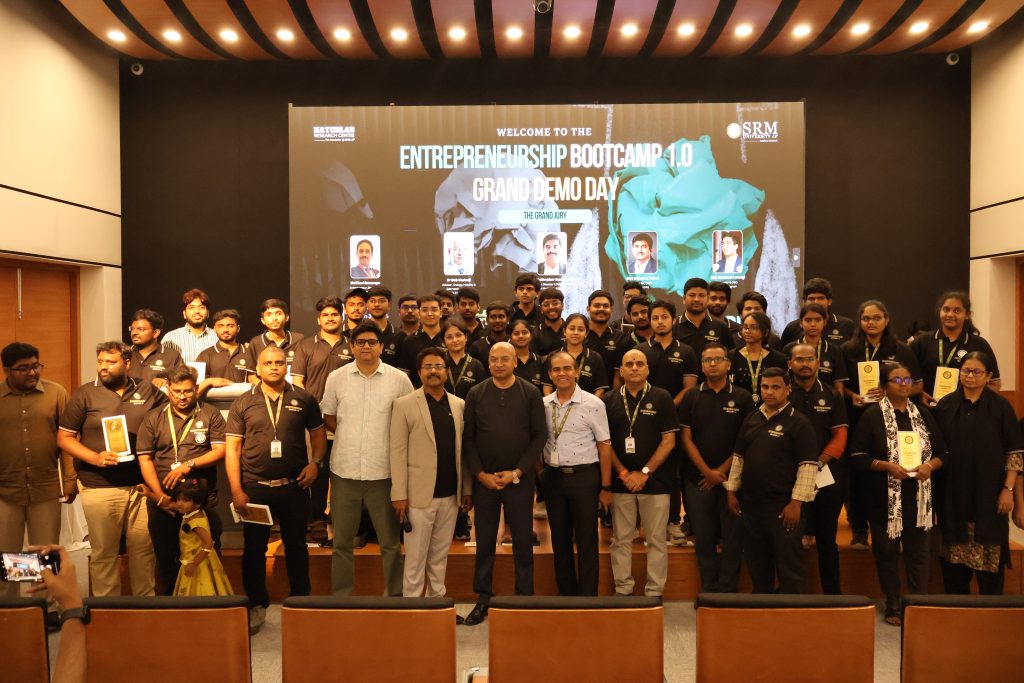
The Entrepreneurship Bootcamp 1.0 Demo Day, hosted by the Directorate of Entrepreneurship and Innovation at SRM University-AP on March 31, 2024, marked a fitting culmination of rigorous entrepreneurship training for aspiring student and faculty entrepreneurs. Dynamic pitches were presented by participants through the demonstration of their innovative ideas, astute business models and go-to-market strategies, complemented by sharp & insightful feedback from global investors and world-class mentors. The elite panel of industry mentors included Srikanth Talluri, Founder and CMD of 6D.Works, Rathnakar Samavedam, Investment Director & CEO Hyderabad Angels, Deb Mukherji, Chief Advisor-Anglian Omega Group – India, Siddharth Dangi, Founder & CEO at Mentogram, Singapore, Ravi Eswarapu, President of TIE, CXO turned Entrepreneur and Dr Dhiraj K Mahajan, Associate Professor, Department of Mechanical Engineering, IIT Ropar along with Prof. Manoj K Arora, Vice Chancellor of SRM AP.
The Entrepreneurship Boot Camp 1.0 at SRM AP was a comprehensive 6-week cohort featuring 8 interactive sessions carefully curated for a dedicated pool of 60+ selected participants, who immersed themselves in an intensive boot camp guided by Prof. Sidharth Tripathy, a Harvard Alumnus and a Director of Entrepreneurship and Innovation at SRM AP.
Participants navigated the intricacies of ideation, business development, and strategic planning as the curriculum featured world-class case studies, practical implementation roadmaps, and real-time engagements with industry and business mentors of international calibre. From a competitive pool of 180 applicants, a rigorous selection process resulted in the acceptance of only 60 candidates. Further refinement led to the identification of 16 standout ventures. Ultimately, a select group of 10 ventures was chosen to receive a grant of Rs 50,000 each, thereby empowering them to incubate, accelerate, and build their ventures in Hatch Lab Research Centre, the incubator of SRM AP.
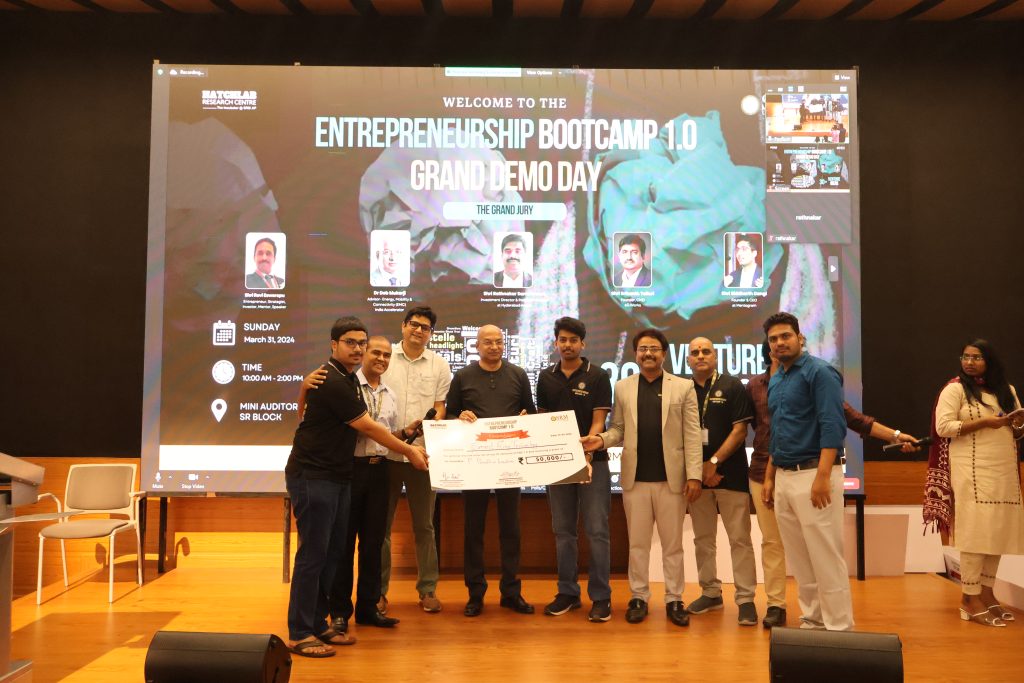
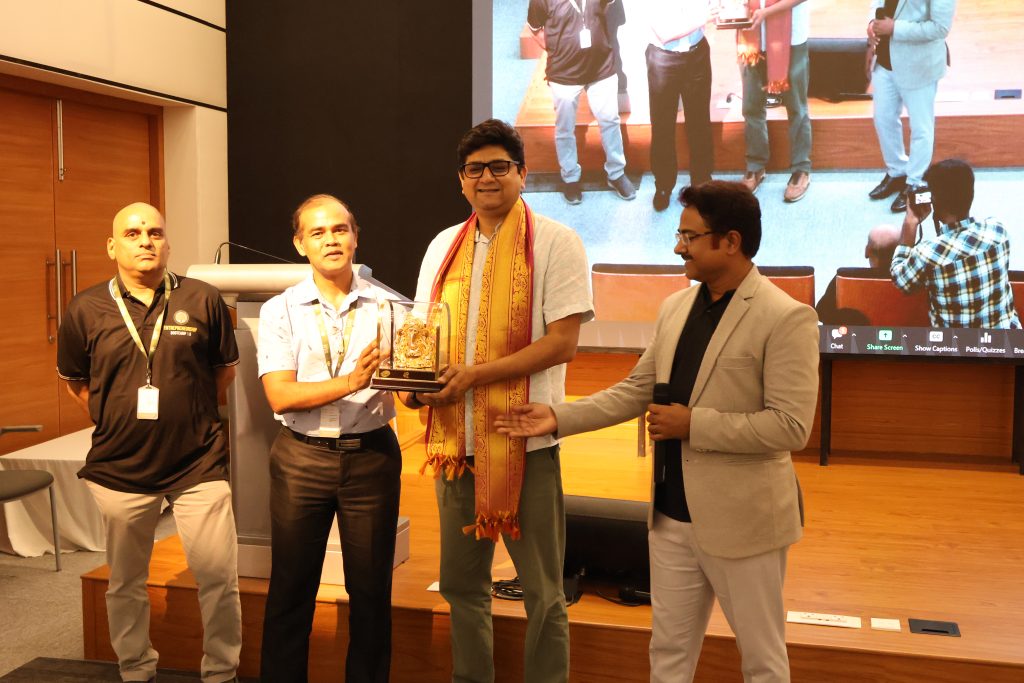
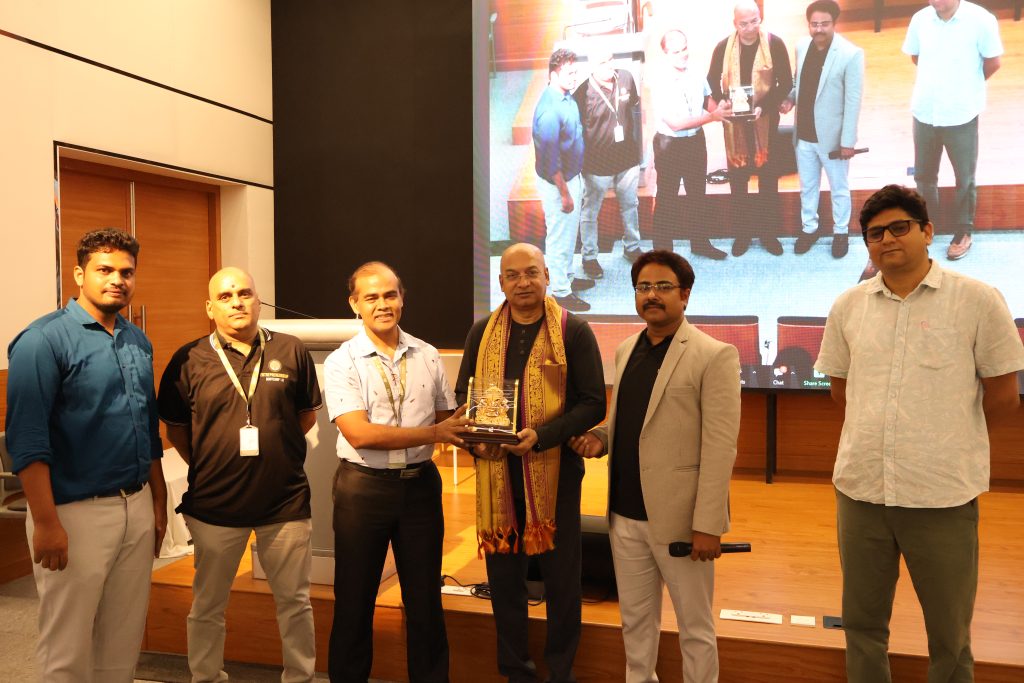
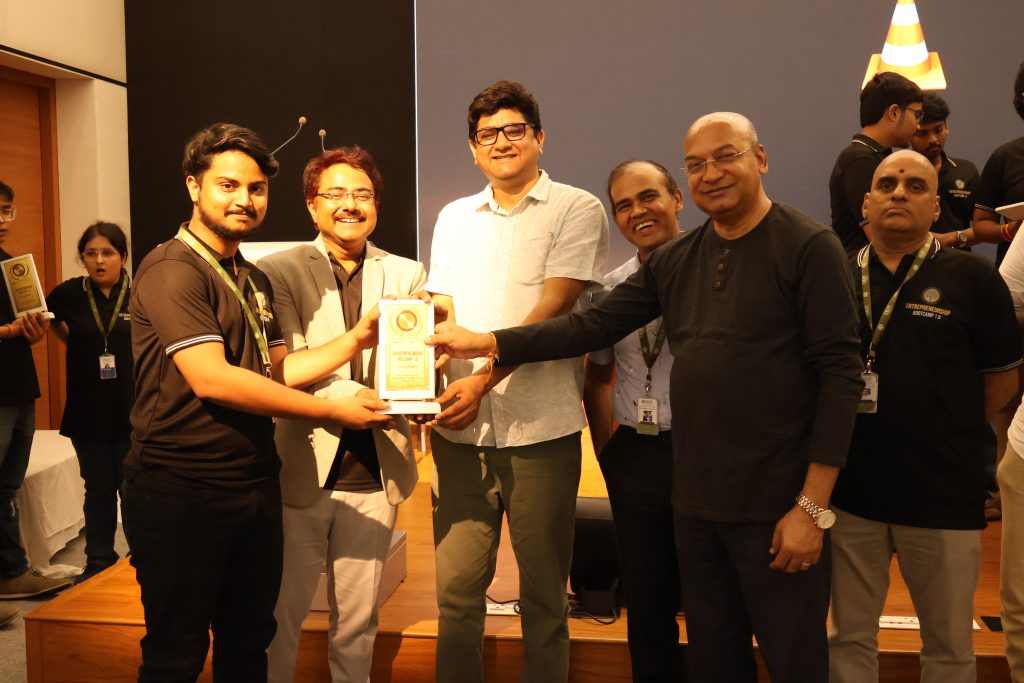
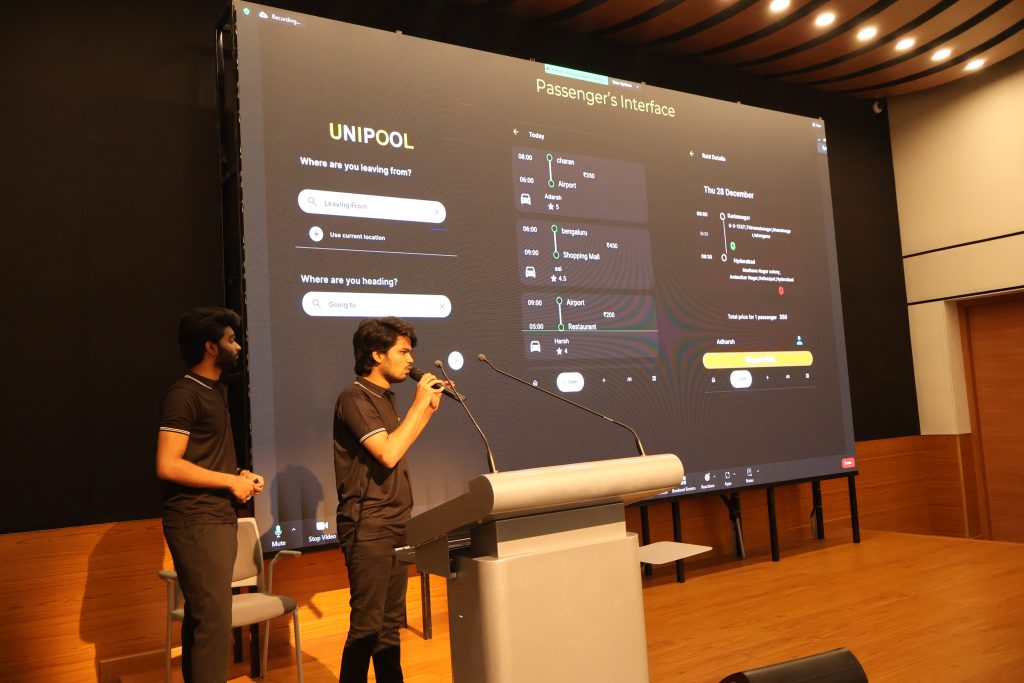
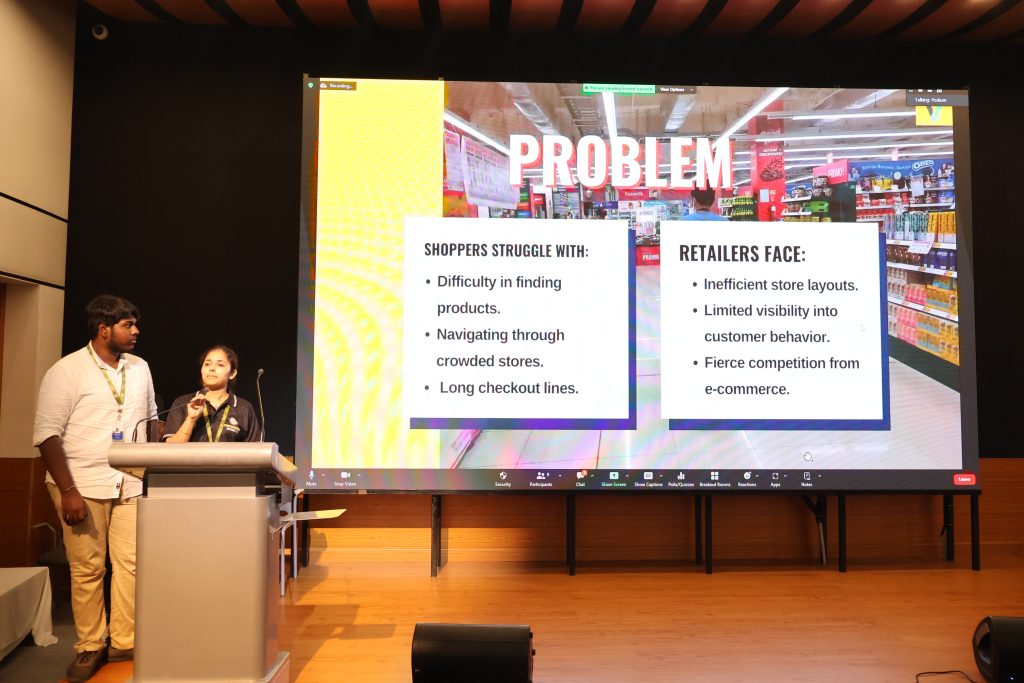
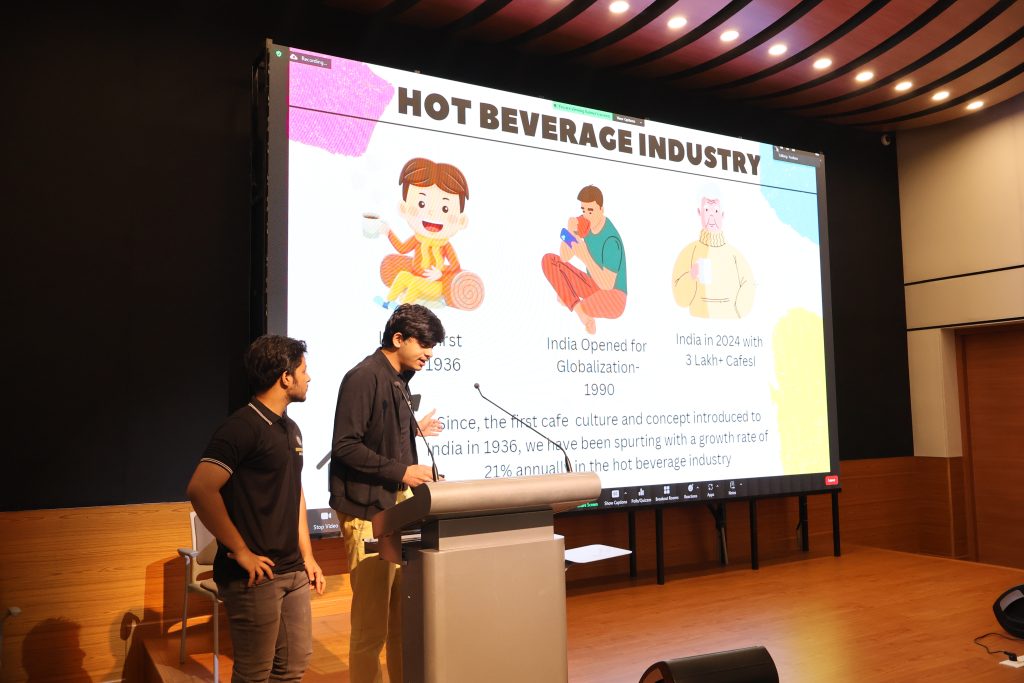
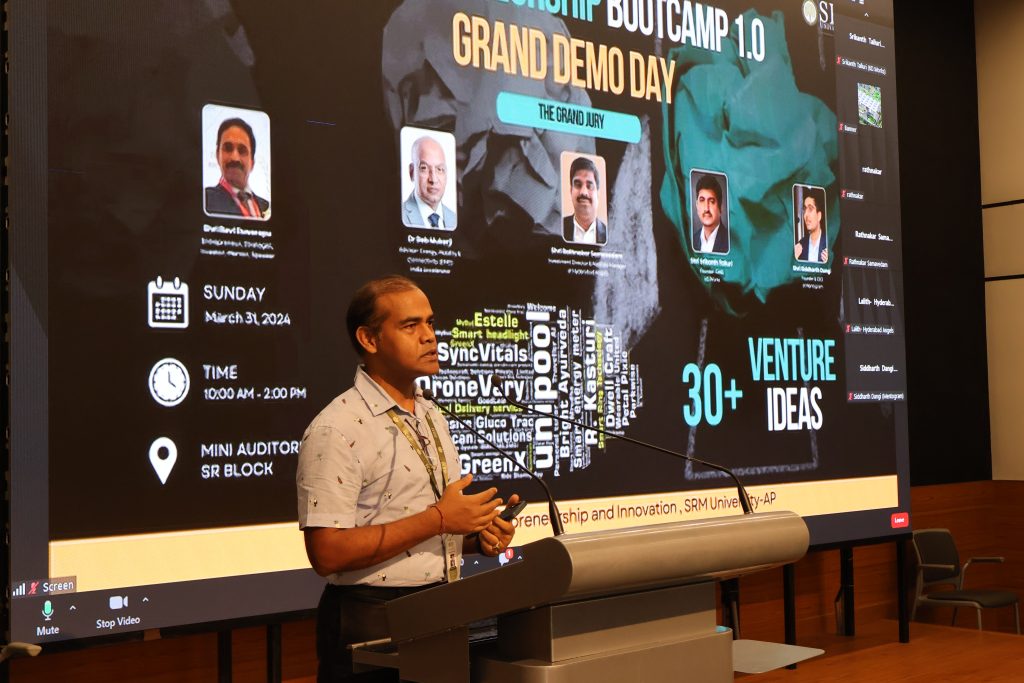
- Published in Departmental News, IDEA Events, IDEA NEWS, IDEA Workshop, News
Accelerated Academic Leadership Workshop
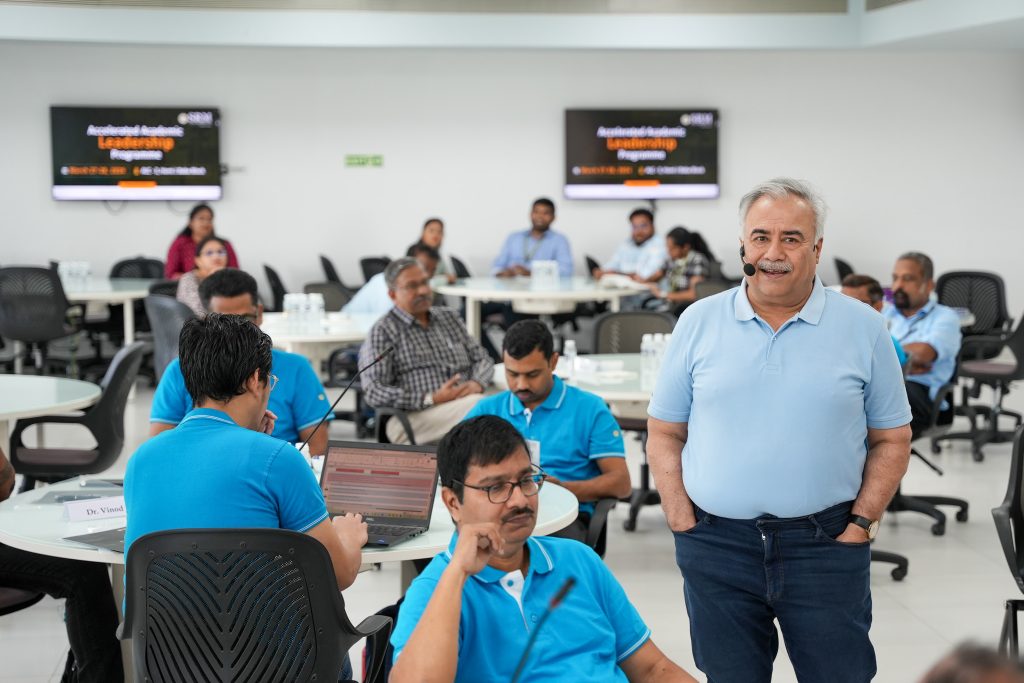
The Directorate of Human Resources organised a 2-day Accelerated Academic Leadership Programme 2024, on March 27 and 28, 2024, bringing together the academic community to align with the institute’s mission and strategic goals. This landmark event, organised in collaboration with People Business Consulting, has brought together Mr Kadapa Hanumantha Rao Muralidhar and Vinish Soman from People Business Consulting, Vice Chancellor Prof. Manoj K Arora, Registrar Dr R Premkumar R, Deans and Associate Deans of all schools and HoDs and faculty from all departments.
“Building on the foundation set by last year’s Alignment 360 Workshop, we are focused on achieving our strategic objectives for 2023-28. Our aim is not only to enhance operational excellence but also to foster individual and collective growth within our community of over 7,000 students and 300 faculty members. Our ambitious targets are to position SRM University-AP among the Top 30 universities in India by 2027-28. We are setting benchmarks that reflect our commitment to excellence and the development of our academic team,” said Prof. Manoj Arora.
Prof. Arora also commented on how the university is dedicated to nurturing a vibrant team of young professors, with an average age of 34, signifying the university’s belief in youthful innovation and dynamic leadership. He also spoke exclusively on SRM AP’s culture of continuous learning and growth, guided by 6 core values integral to our institutional ethos.
- Published in Departmental News, News, Workshop
Annual Sports Day comes to a Grand Close
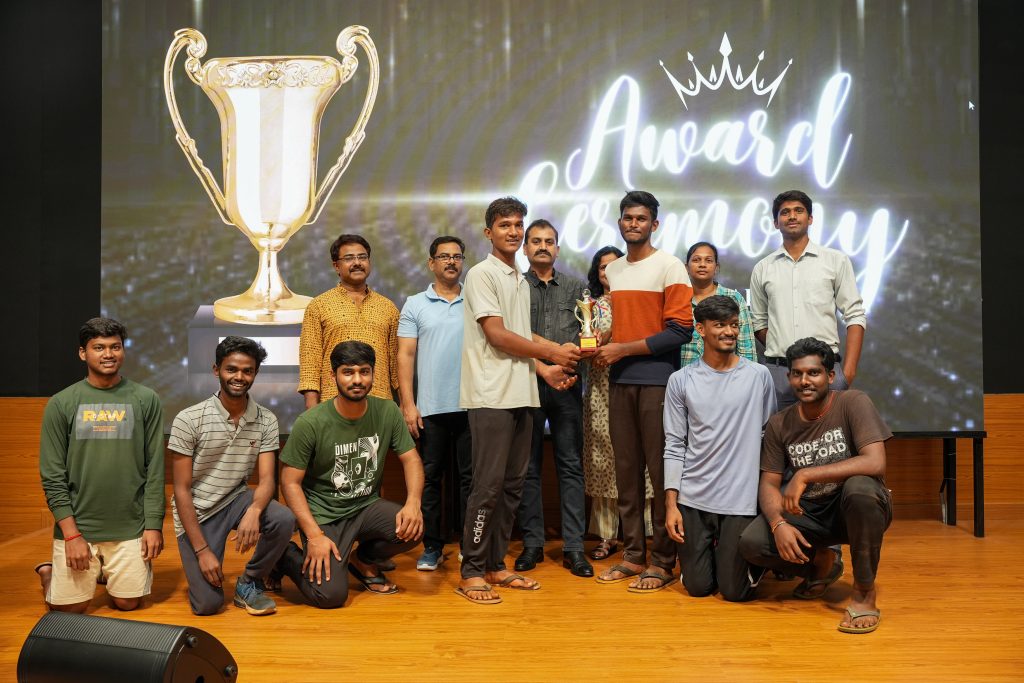
The Directorate of Sports at SRM University-AP organised its highly anticipated Annual Sports Day on March 16 and 17, 2024. This exciting event was conducted in the wake of its 3-day National Sports Fest -UDGAM ‘24. The event was graced by Mr Anup Singh Suryavanshi, Director of Campus Life & Maintenance, and Mr Anil Kumar Nigam, Director of Student Affairs, as its chief guest.
The Annual Sports Day saw an impressive participation of 669 athletes. These talented athletes engaged in an intense and spirited competition, showcasing their skills and abilities in both individual and team events. It was truly a spectacle to behold, with participants and spectators alike left in awe of the incredible displays of athleticism and sportsmanship on display. The event showcased a remarkable display of skill and persistence across various competitions in Badminton, Table Tennis, Chess, Kabaddi, Cricket, Volleyball and several others.
The annual sports fest culminated with a prize distribution ceremony, Assistant Director of Sports, Ms Sushmitha Kumari; Director of International Relations and Higher Studies, Ms Aditi Jain; Associate Director of Entrepreneurship and Innovation, Mr Udayan Bakshi alongside sports officer, coaches, athletes and students bore witness to this momentous occasion. As the curtains close on an exhilarating annual sports fest, we eagerly anticipate the continuation of a legacy focused on promoting sportsmanship, fostering healthy competition, and nurturing the talents of young athletes.
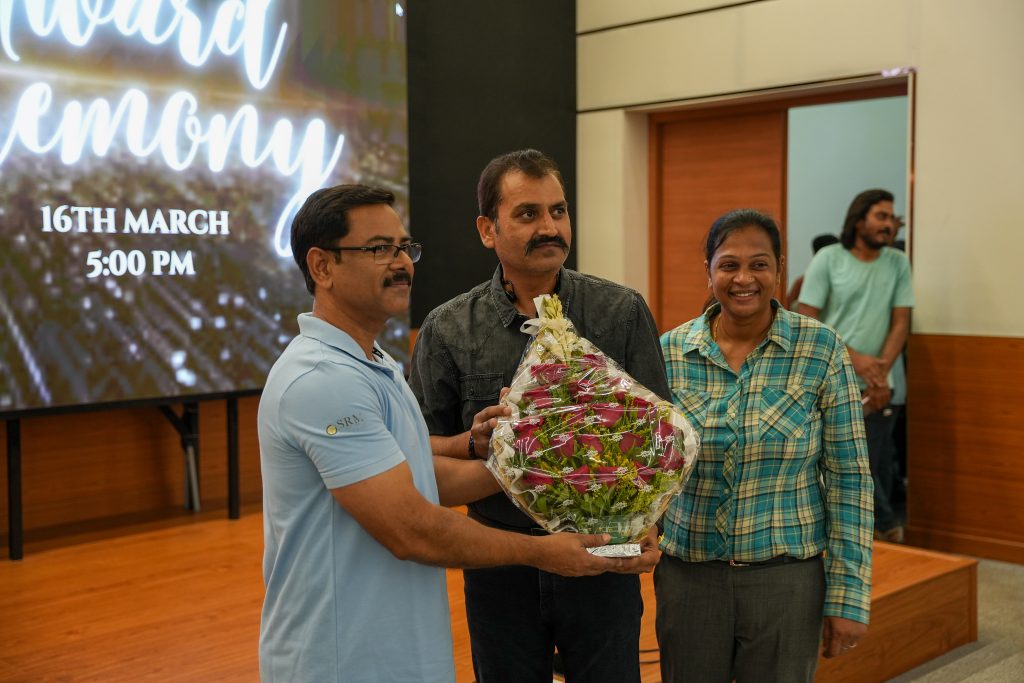
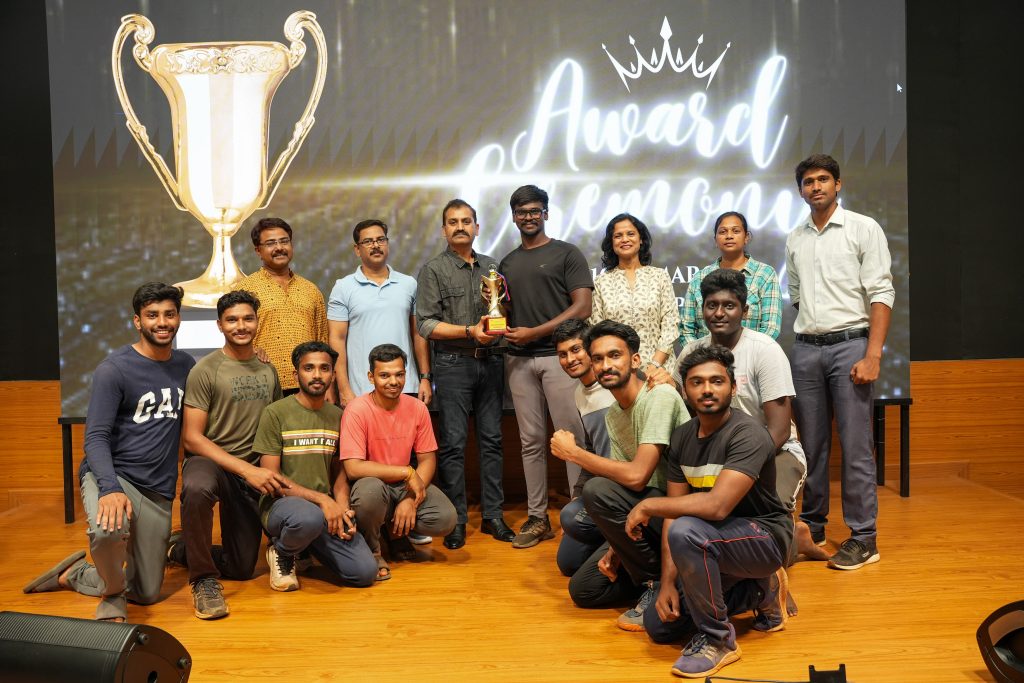
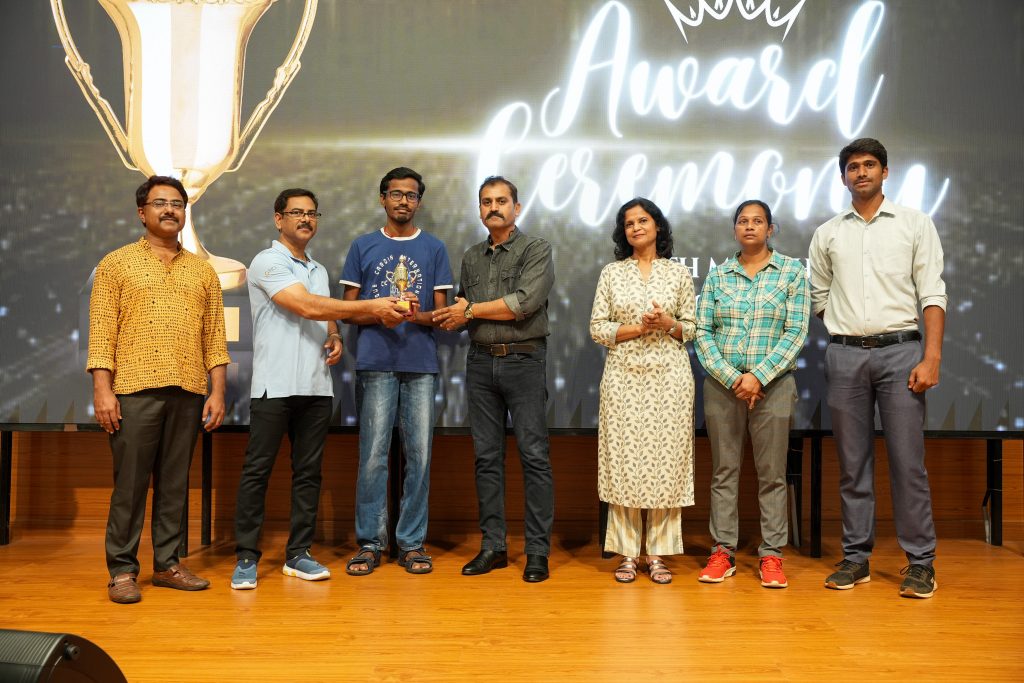
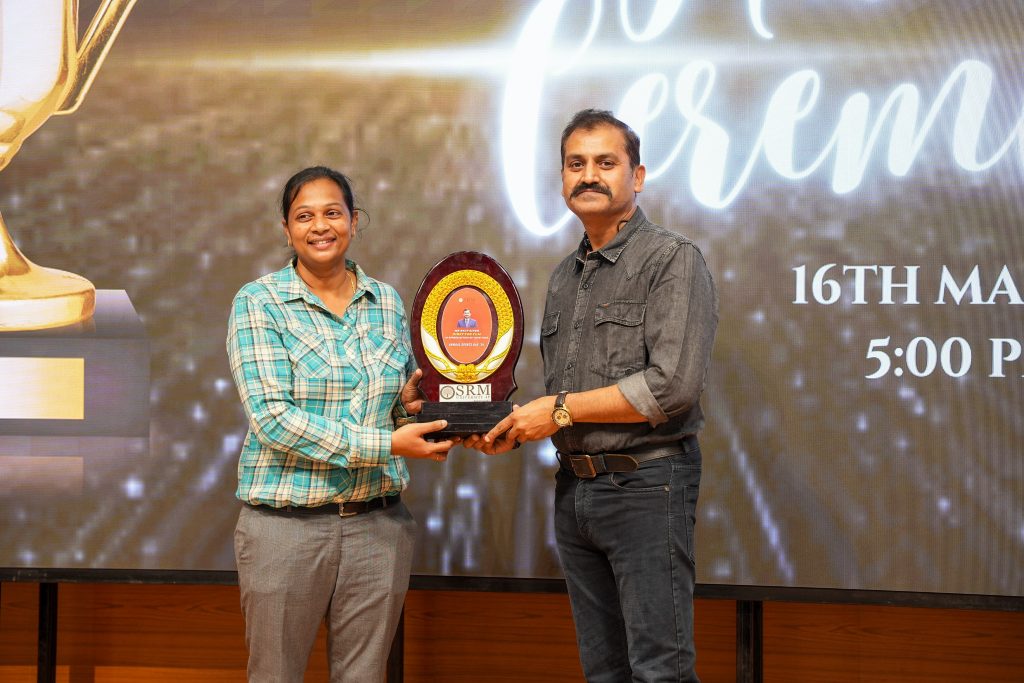
- Published in Departmental News, News, Sports News, student affairs news
Celebrating Inclusion: Empowering Women Workforce at SRM AP
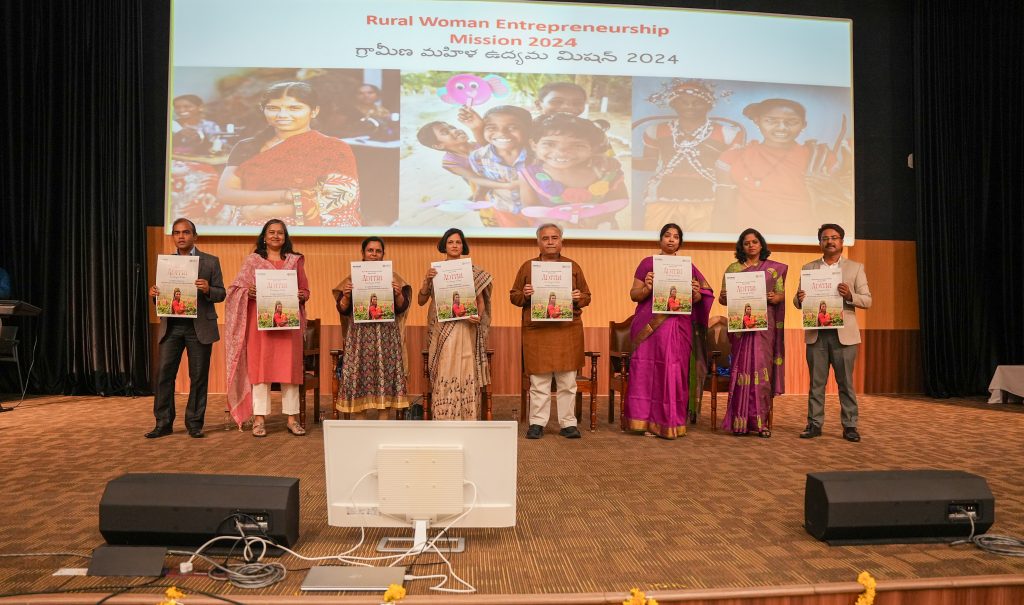 In commemoration of International Women’s Day, the Directorate of Student Affairs and the Directorate of HR collaborated to orchestrate a vibrant celebration on campus. The celebration witnessed Dr Shikha Jain, Director of Preservation and Community Design at DRONAH and Vice-President of ICOFORT, as its esteemed guest, alongside her were distinguished figures, including Vice Chancellor, Prof. Manoj K Arora; Associate Director of Faculty Affairs Prof. Sheela Singh; Professor of Liberal Arts, Dr Vandana Swami; and Associate Director of Student Affairs, Ms Revathi B.
In commemoration of International Women’s Day, the Directorate of Student Affairs and the Directorate of HR collaborated to orchestrate a vibrant celebration on campus. The celebration witnessed Dr Shikha Jain, Director of Preservation and Community Design at DRONAH and Vice-President of ICOFORT, as its esteemed guest, alongside her were distinguished figures, including Vice Chancellor, Prof. Manoj K Arora; Associate Director of Faculty Affairs Prof. Sheela Singh; Professor of Liberal Arts, Dr Vandana Swami; and Associate Director of Student Affairs, Ms Revathi B.
Dr Sikha Jain, in her keynote address, reverberated with homage to the timeless strength inherent in women, drawing parallels with the archetype of Goddess Durga, symbolising courage, bravery, and compassion. She urged all attendees to embody these virtues and champion gender parity in every sphere of life.
Prof. Arora, in his speech, emphasised on the pivotal role women play in shaping our present and future, excelling across diverse domains from space exploration to entrepreneurship. Embracing this year’s theme, “Inspiring Inclusion,” he stated, “our dedication lies in cultivating a world where everyone appreciates and supports women’s contributions, ensuring they experience profound empowerment and a sense of belonging”.
The event also marked the launch of ‘Aditri-The Horizon of Hope,’ a transformative initiative aimed at empowering rural women, serving as a testament to the university’s commitment to fostering positive change. This pioneering endeavour was inaugurated by Mr Sidharth Shankar Tripathy, Director – Entrepreneurship and Innovation & Professor of Practice. The celebration reached its zenith with captivating performances by our talented staff, faculty and students, culminating in a joyous prize distribution for the Women’s Day competitions.
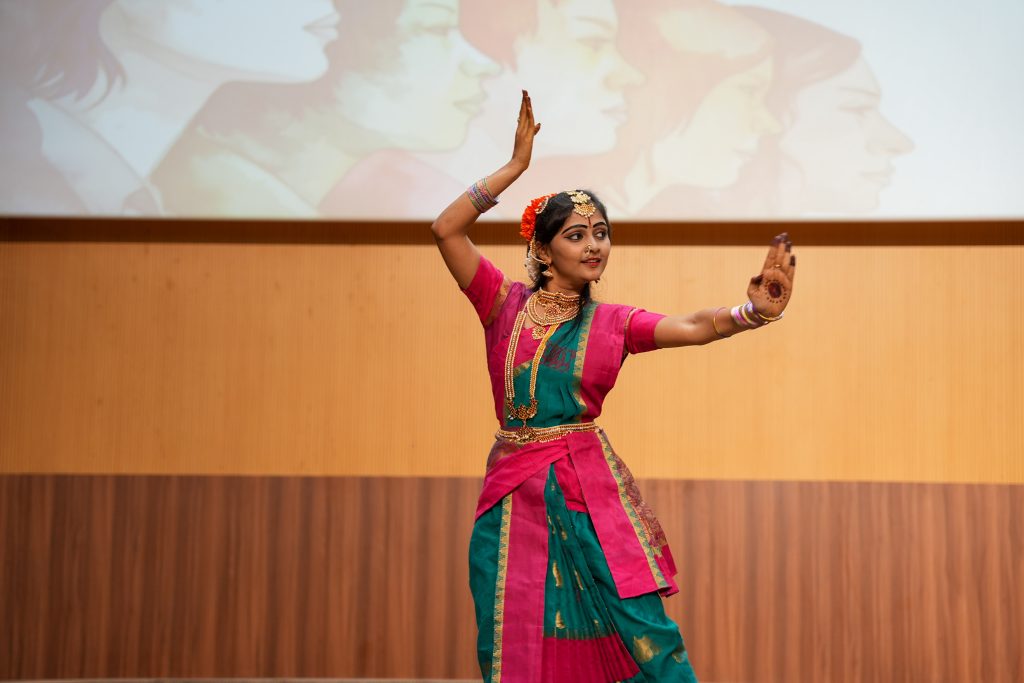
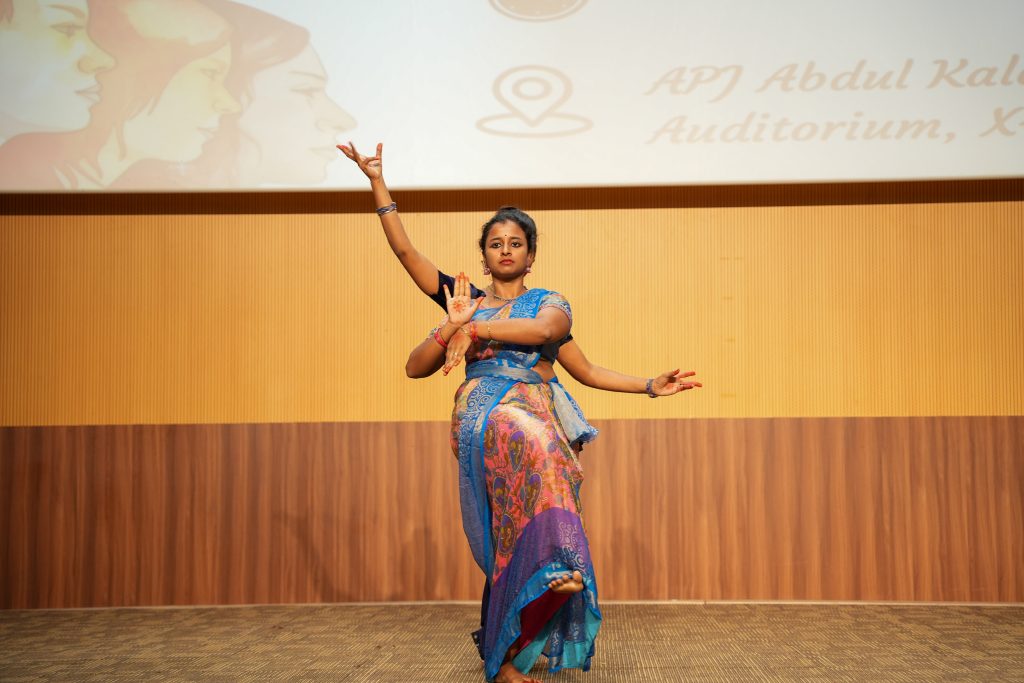
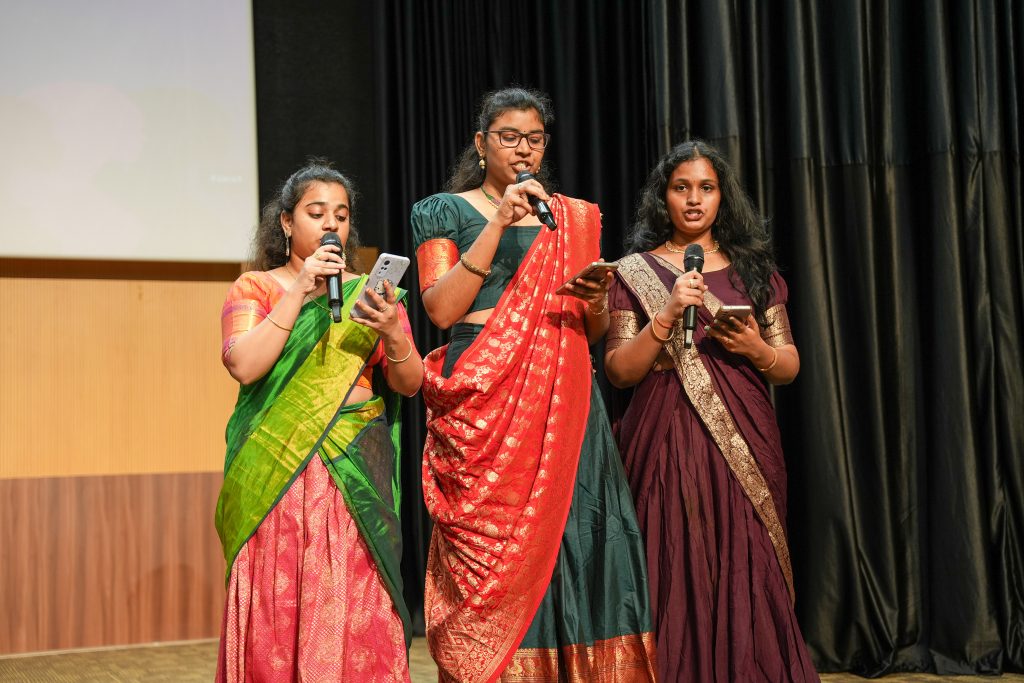
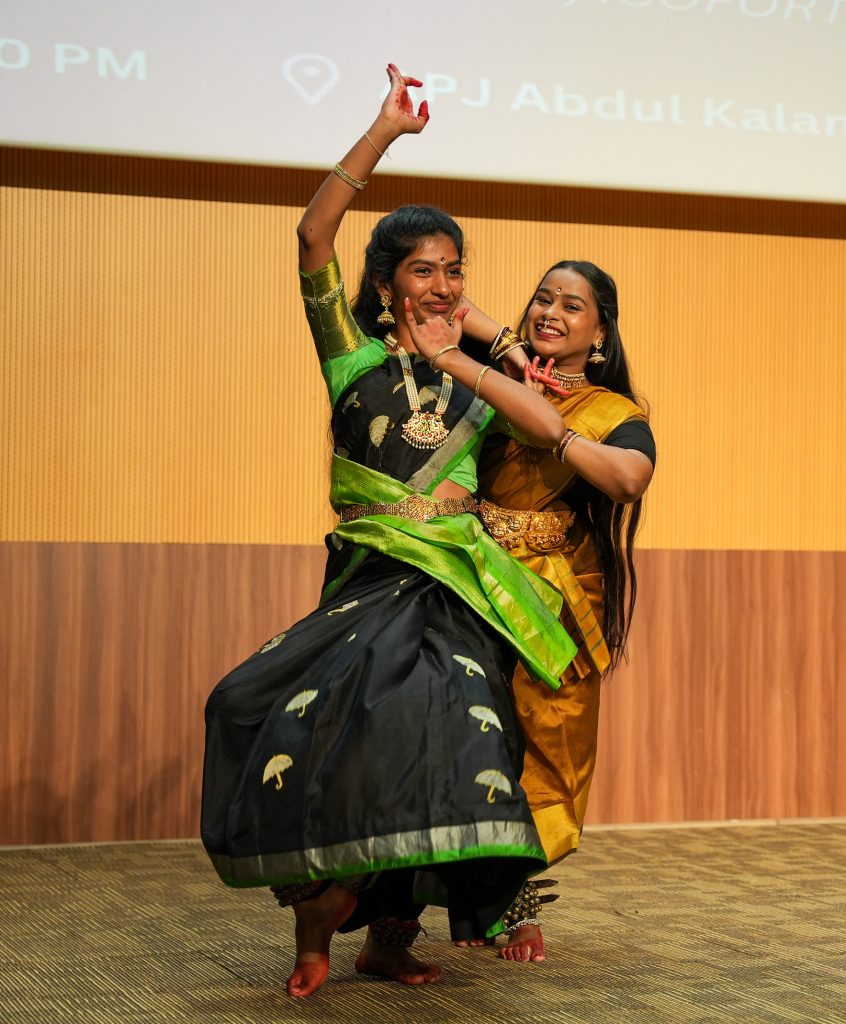
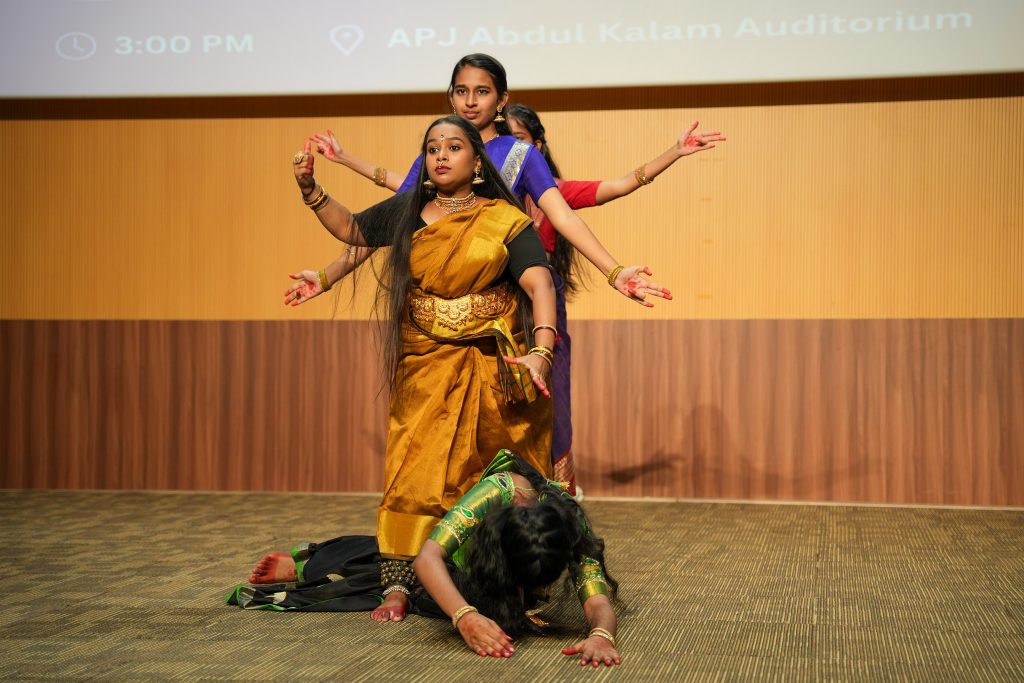
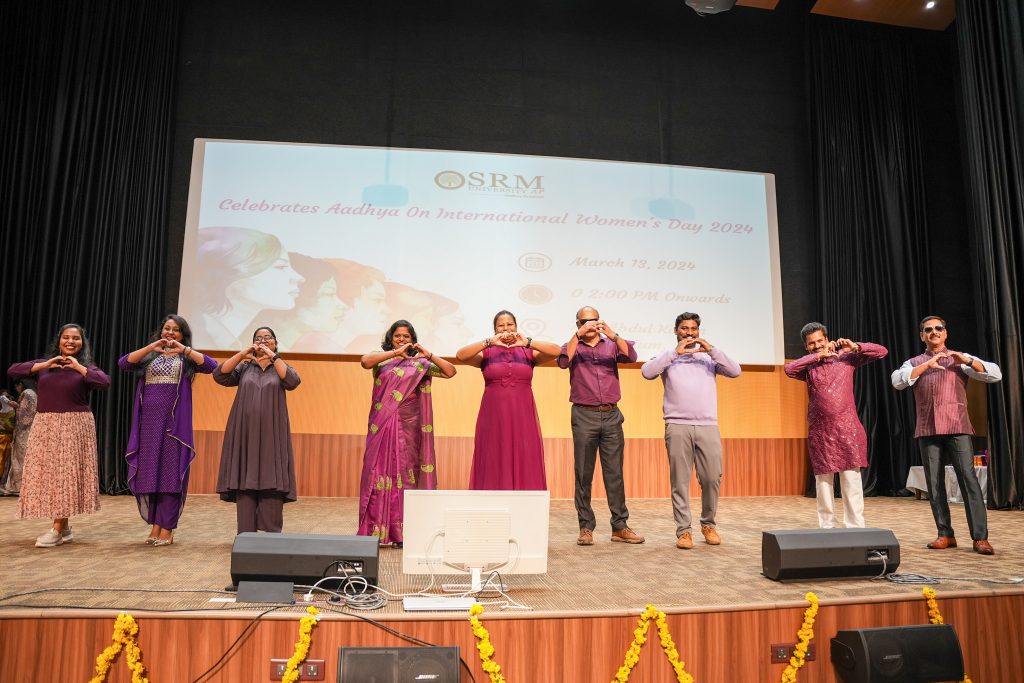
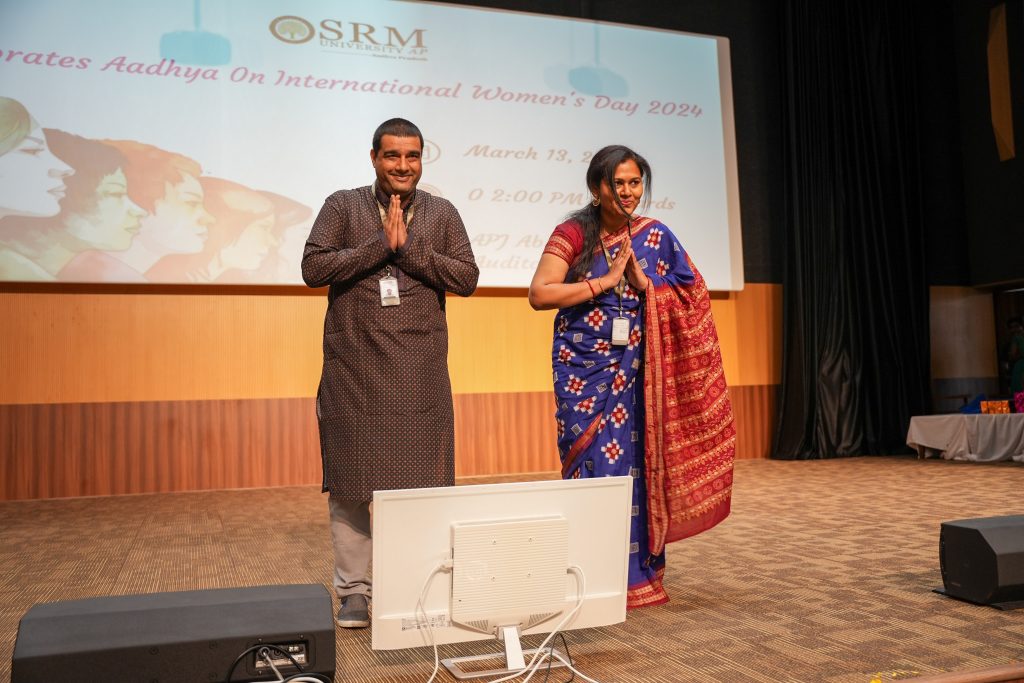
- Published in Departmental News, News, student affairs news
Shining Bright: PhD Scholar Wins 2nd Prize at National Symposium
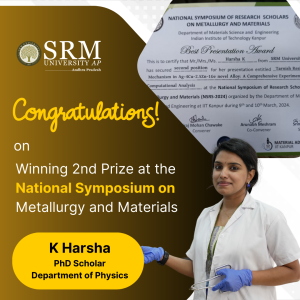 SRM University-AP is proud to congratulate Harsha, a brilliant PhD scholar from the Department of Physics, for her exceptional achievement at the National Symposium of Research Scholars on Metallurgy and Materials held at IIT Kanpur. Harsha secured the prestigious 2nd prize for her remarkable presentation titled “Tarnish Resistance Mechanism in Ag-4Cu-2.5Zn-1Ge Novel Alloy: A Comprehensive Experimental and Computational Analysis”.
SRM University-AP is proud to congratulate Harsha, a brilliant PhD scholar from the Department of Physics, for her exceptional achievement at the National Symposium of Research Scholars on Metallurgy and Materials held at IIT Kanpur. Harsha secured the prestigious 2nd prize for her remarkable presentation titled “Tarnish Resistance Mechanism in Ag-4Cu-2.5Zn-1Ge Novel Alloy: A Comprehensive Experimental and Computational Analysis”.
The symposium, organised at IIT Kanpur, brought together some of the brightest minds in the field of metallurgy and materials research. Harsha’s presentation stood out among the impressive array of research papers, showcasing her expertise and dedication to pushing the boundaries of scientific exploration.
Her presentation focused on the intricate mechanism of tarnish resistance in the Ag-4Cu-2.5Zn-1Ge novel alloy. Through a comprehensive analysis that combined experimental and computational approaches, Harsha shed light on the factors influencing tarnish resistance in this unique alloy composition. Her findings have significant implications for the development of advanced materials with enhanced durability and longevity.
The symposium, which congregates the brightest minds in the field, was the perfect platform for Harsha to showcase her extensive research. Her work, which provides significant insights into the tarnish resistance mechanisms of novel silver alloys, has been recognised for its depth and scientific rigour.
The recognition received by Harsha at this prestigious national symposium is a testament to her exceptional research capabilities and the quality of education and mentorship provided at SRM University-AP. It highlights the university’s commitment to nurturing talent and fostering an environment conducive to groundbreaking research.
SRM University-AP extends its warmest congratulations to Harsha for this remarkable achievement. Her success serves as an inspiration to fellow students and researchers, encouraging them to pursue excellence in their respective fields of study.
- Published in Departmental News, News, Physics News, Research News
Unleashing the Power of Neuroscience: Paper on Person Identification
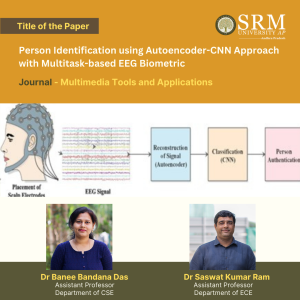 In a remarkable academic achievement, Dr Banee Bandana Das, Assistant Professor in Department of Computer Science and Engineering and Dr. Saswat Kumar Ram, Assistant Professor in Department of Electronics and Communication Engineering, have made significant contributions to the field of biometric security. Their paper, titled “Person Identification using Autoencoder-CNN Approach with Multitask-based EEG Biometric,” has been published in the esteemed ‘Multimedia Tools and Applications journal, which is recognised as a Q1 journal with an impressive impact factor of 3.6.
In a remarkable academic achievement, Dr Banee Bandana Das, Assistant Professor in Department of Computer Science and Engineering and Dr. Saswat Kumar Ram, Assistant Professor in Department of Electronics and Communication Engineering, have made significant contributions to the field of biometric security. Their paper, titled “Person Identification using Autoencoder-CNN Approach with Multitask-based EEG Biometric,” has been published in the esteemed ‘Multimedia Tools and Applications journal, which is recognised as a Q1 journal with an impressive impact factor of 3.6.
This pioneering work showcases a novel approach to person identification using electroencephalogram (EEG) data. The research leverages the power of Autoencoder-CNN models combined with multitask learning techniques to enhance the accuracy and reliability of EEG-based biometric systems.
The publication of this paper not only underscores the high-quality research conducted at SRM University-AP but also places the institution at the forefront of innovative developments in biometric technology. It is a testament to the university’s commitment to advancing scientific knowledge and providing its faculty with a platform to impact the global research community positively.
Abstract
In this research paper, we propose an unsupervised framework for feature learning based on an autoencoder to learn sparse feature representations for EEG-based person identification. Autoencoder and CNN do the person identification task for signal reconstruction and recognition. Electroencephalography (EEG) based biometric system is vesting humans to recognise, identify and communicate with the outer world using brain signals for interactions. EEG-based biometrics are putting forward solutions because of their high-safety capabilities and handy transportable instruments. Motor imagery EEG (MI-EEG) is a maximum broadly centered EEG signal that exhibits a subject’s motion intentions without real actions. The Proposed framework proved to be a practical approach to managing the massive volume of EEG data and identifying the person based on their different task with resting states.
The title of Research Paper in the Citation Format
Person identification using autoencoder-CNN approach with multitask-based EEG biometric. Multimedia Tools Appl (2024).
Practical implementation/social implications of the research
- To develop a personal identification system using MI-EEG data.
- This work is about an Autoencoder-CNN-based biometric system with EEG motor imagery inputs for dimensionality reduction and denoising (extracting original input from noisy data).
- The designed Autoencoder-CNN-based biometric architecture to model MI-EEG signals is efficient for cybersecurity applications.
Collaborations
- IIITDM, Kurnool, India
- National Institute of Technology, Rourkela, India
- University of North Texas, Denton, USA
Future Research Plan
In the future, different deep learning and machine learning methods can be merged to explore better performance in this EEG-based security field and other signal processing areas. We will investigate the robustness deep learning architectures to design a multi-session EEG biometric system.
- Published in CSE NEWS, Departmental News, ECE NEWS, News, Research News
Breakthrough in Lead-Free Brass Manufacturing: Patent Granted to Prof. G. S. Vinod Kumar
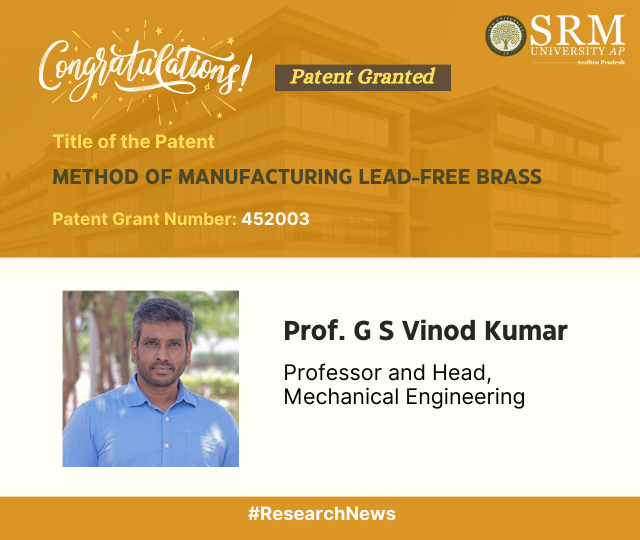
The Department of Mechanical Engineering are excited to share a significant milestone achieved in the field of material science and metallurgy. Prof. G S Vinod Kumar, Professor and Head of the Department, has been granted a patent jointly with Titan Company, Bangalore, for the invention “METHOD OF MANUFACTURING LEAD-FREE BRASS” (Patent Grant Number: 452003). This industrial patent was created through a collaboration between SRM University-AP and Titan Company Limited.
This groundbreaking discovery not only transforms the manufacturing of lead-free brass, but it also highlights the collaborative spirit that drives advances in materials engineering.
Abstract
The present disclosure relates to a field of material science and metallurgy. In particular, the present disclosure discloses a method for manufacturing lead-free brass alloy. The method includes preparation of first master alloy by melting copper and a transition element, and a second master alloy by mixing molten zinc and molten copper. The lead-free brass is obtained by meting a predetermined proportion of the first master alloy and second master alloy along with elemental copper in a furnace under an argon atmosphere. The lead-free brass alloy is then subjected to a precipitation hardening process to improve hardness. The lead-free hard brass alloy containing titanium exhibits improved hardness in comparison to bare lead-free brass mainly due to the presence of intermetallic nanoscale precipitates, which are distributed throughout the lead-free brass matrix.
SRM University-AP continues pushing the limits of scientific discovery and industrial innovation.
- Published in Departmental News, Mechanical Engineering NEWS, News, Research News
AESEE ’24: Promoting Global Dialogue on Environmental Sustainability
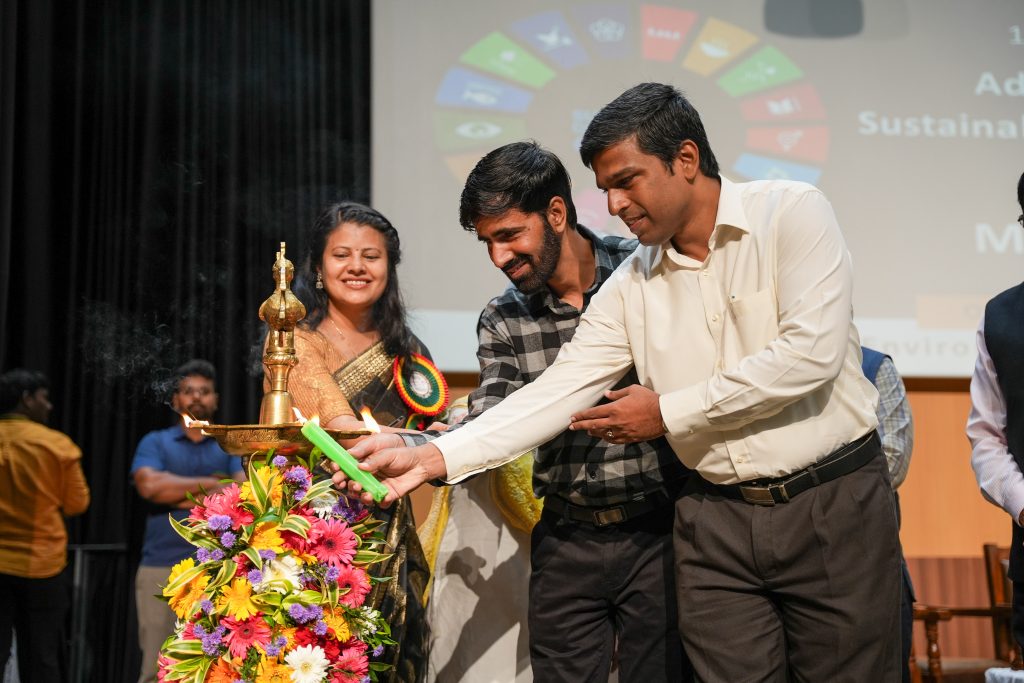
The Department of Environmental Science and Engineering at SRM University-AP organised its 3-day International Conference on Advances in Environmental Sustainability, Energy and Earth Sciences ( AESEE 2024). The inaugural session on March 14, 2024, featured industry experts, with Prof. Prakasham Tata from the Center for Transformation of Waste Technology, USA, as the Keynote Speaker and Dr Prakash Chauhan, Director-National Remote Sensing Centre, Indian Space Research Organization, as the Chief Guest for the event.
He highlighted the attributes of the department and lauded the efforts of the faculty and students who contributed to the publication of 165 articles, of which 106 were featured in Q1 Journals. This momentous occasion was witnessed by Vice Chancellor, Prof. Manoj K Arora; Advisor, Prof. V S Rao; Associate Professor and Head of the Department, Dr Rangabhasiyam Selvasembian; the organising secretaries, Dr Javed Ahmad Dar, Dr Pankaj Pathak and Dr Subashree Kothandaraman, along with participants from diverse parts of the globe, both online and offline.
Vice Chancellor-Prof. Manoj K Arora, in his address, emphasised that a congregation of such an intelligentsia is the need of the hour. He implored the audience to work at ground level and not confine themselves to mere talks and conferences, “go to the community and provide solutions, and solutions cannot be provided in the classrooms alone”, he stated.
Prakasham Tata, in his exuberant address, stated that the nation does not lack the intelligence or manpower to combat the alarming ecological crisis; It is the lack of trained personnel, pollution control boards, corruption and lack of effective cooperation between societal institutes that is causing a lax. Prof. Tata insisted that “universities like SRM AP are knowledge centres and have the tenacity and wisdom to combat the growing threats.” He issued a clarion call to all the youngsters and environmental enthusiasts to walk the talk.
Dr Prakash Chauhan, Director of the National Remote Sensing Centre, in his speech, cited Indians’ inherent way of living a sustainable lifestyle and went on to encourage the young participants in attendance to become true ‘karma yogis’ by innovating and finding new ways to promote and work towards environmental sustainability. He implored the youth to brainstorm innovative ideas that could gradually lead to monetisation opportunities while also benefitting the environment.
The inaugural day of the conference also marked the unveiling of the abstract book compiled by the department. Dr Javed Ahmad Dar, Assistant Professor and organising secretary of the conference, mentioned that the book consists of a total of 271 abstracts across 15 thematic areas. The event concluded with the Vice Chancellor and the Advisor honouring the guests with a token of appreciation.
- Published in Departmental News, ENVS News, News
Metallurgical Study on Fusion Welding of Aluminium and Magnesium
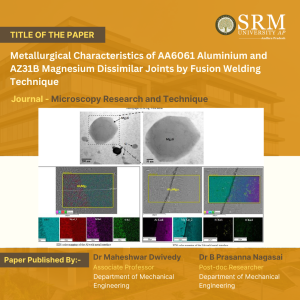 In a significant scientific endeavour, Dr Maheshwar Dwivedy, Associate Professor in the Department of Mechanical Engineering, and Dr B Prasanna Nagasai, Post-Doctoral Researcher have jointly authored a research paper titled “Metallurgical Characteristics of AA6061 Aluminium and AZ31B Magnesium Dissimilar Joints by Fusion Welding Technique”. Their work delves into the metallurgical properties of dissimilar joints formed by fusion welding between AA6061 aluminium and AZ31B magnesium.
In a significant scientific endeavour, Dr Maheshwar Dwivedy, Associate Professor in the Department of Mechanical Engineering, and Dr B Prasanna Nagasai, Post-Doctoral Researcher have jointly authored a research paper titled “Metallurgical Characteristics of AA6061 Aluminium and AZ31B Magnesium Dissimilar Joints by Fusion Welding Technique”. Their work delves into the metallurgical properties of dissimilar joints formed by fusion welding between AA6061 aluminium and AZ31B magnesium.
The study, published in the esteemed Q1 journal “Microscopy Research and Technique”, sheds light on the intricate interactions between these two dissimilar materials. By employing advanced microscopy techniques, the researchers meticulously examined the weld interfaces, grain structures, and elemental compositions. Their findings contribute to our understanding of the joining behaviour and intermetallic formation in such hybrid joints.
This collaborative effort exemplifies SRM University – AP’s commitment to cutting-edge research and interdisciplinary exploration. As the scientific community continues to unravel the mysteries of material behaviour, Dr Dwivedy and Dr Nagasai’s work stands as a beacon of knowledge and innovation.
Stay tuned for more updates on this groundbreaking research!
Abstract
Aluminium (Al) and magnesium (Mg) alloys are extensively used in the automobile sector because of their high strength-to-weight ratio, excellent castability, low density and simplicity of recycling. Al-Mg structures that automotive uses have a big chance of lowering their weight. Although there is a significant opportunity for substantial cost reduction, the use of magnesium in aluminium structures remains restricted. This study aims to weld 3 mm-thick rolled sheets of AA6061 Al and AZ31B Mg alloy using the cold metal transfer (CMT) arc welding process. Three different filler wires (ER1100, ER4043, and ER5356) were used in the experiment. In this article, the mechanical and microstructure characteristics of Al/Mg dissimilar joints manufactured by CMT are evaluated and discussed in depth. Optical microscope (OM), scanning electron microscopy (SEM), energy dispersive X-ray spectroscopy (EDX), and X-ray diffraction were all used to analyse the CMT-welded Al/Mg dissimilar joints. Of the three filler wires used, ER4043 (Al-5%Si) filler wire yielded defect-free sound joints due to the presence of Si, which improves the flow ability of molten filler during welding. The Al/Mg dissimilar weld still produced the Mg-rich intermetallic (IM) Al12Mg17 and the Al-rich IM Al3Mg2. The surfaces of the fractured area of the CMT-welded Al/Mg dissimilar joints revealed the presence of the Mg-rich intermetallics (Al12Mg17), which is responsible for the decrease in tensile strength. The reduction of intermetallics, particularly of Mg-rich intermetallics (Al12Mg17) is important for improving joint strength.
Highlights
- Cold metal transfer (CMT) arc welding was used to control the Al-Mg-rich intermetallics in the Al/Mg dissimilar joints.
- The microstructure, morphology and phase composition of the welded joints were studied by OM, SEM, TEM, EDS and XRD.
- The weld metal and AL substrate are joined with a strong interface, while the weld metal and Mg substrate are joined with an epitaxial solidification area where the intermetallic compounds of Mg2Al3, Mg17Al12 and Mg2Si are generated.
- The weld metal on the Mg side experienced a brittle fracture, with a continuous distribution of Mg2Al3, Mg17Al12 and Mg2Si.
Explanation of Research in Layperson’s Terms
Al and Mg alloys are extensively used as light metals in engineering due to their advantageous characteristics, including high strength-to-weight ratio, cheap casting costs, low density, excellent machinability, and simple recyclability. Often, each of these materials fails to meet the criteria for lightweight buildings. Consequently, there is a high need for a significant quantity of Al/Mg hybrid structures in many industrial sectors with a particular emphasis on the automotive industry. Choosing the appropriate filler material for joining Al and Mg is crucial for creating robust weldments. The main difficulty in welding dissimilar metals like aluminium and magnesium lies in the formation of inflexible and brittle intermetallic compounds (IMCs) like Mg2Al3 and Mg17Al12, which severely affect the joint’s strength. When it comes to melting points, magnesium is at 650°C and aluminium is at 660°C. Based on the Mg-Al binary phase diagram, the compounds Mg2Al3 and Mg17Al12 can be produced at 450 and 437°C by eutectic reaction. Hence, the primary challenge in Al/Mg dissimilar welding is effectively suppressing the growing number of IMCs. Similarly, minimising energy input and utilising the appropriate chemistry of wire are the primary methods for decreasing the formation of IMCs and improving joint strength.
CMT is an advanced arc welding process which comes under controlled short circuiting transfer mode. The CMT welding cycle consists of two phases, i.e. the arcing phase and short circuit phase. In arcing phase, the filler wire gets melted and it forms as a droplet at the tip of the filler wire. In short circuiting phase, the droplet bridges the gap between the electrode and the weld pool. Once the short circuiting takes place, the filler wire gets retracted backward due to the retraction force and the droplet is detached from the filler wire. In conventional short circuiting transfer mode, the electromagnetic pinch force assists in detaching the droplet from the filler wire and thereby high heat input is produced by means of the short current. Where as in CMT short circuit transfer mode, the welding current is decreased to a lower value whenever a short circuit signal is sensed by the power source and the droplet gets separated from the filler wire with the help of the retraction force that is generated during the backward movement of the filler wire. Finally, the heat input is reduced to a lower value with this metal transfer mode. So, the CMT arc welding process was used to join the 3 mm-thick rolled sheets of AA6061 Al and AZ31B Mg alloy dissimilar materials. This article details the microstructural characteristics of an Al/Mg dissimilar joint. The CMT process controlled IMCs in the Al/Mg dissimilar joint and increased weld metal hardness compared to base metal.
The title of Research Paper in the Citation Format
aAddanki Ramaswamy, *aBellamkonda Prasanna Nagasai, aMaheshwar Dwivedy, Sudersanan Malarvizhi, Visvalingam Balasubramanian, Metallurgical Characteristics of AA6061 Aluminium and AZ31B Magnesium Dissimilar Joints by Fusion Welding Technique, Microscopy research and technique, 2024. DOI: 10.1002/JEMT.24510.
Corresponding Author: Bellamkonda Prasanna Nagasai
Collaborations
Dr. V. Balasubramanian, Professor & Director, Centre for Materials Joining & Research (CEMAJOR) Annamalai University, Annamalai Nagar-608002, Tamilnadu
Future Research Plans:
Planning to work on Fusion Welding (CMT, MIG, TIG, LASER, PLASMA and EBW) and Solid State Welding Processes (FSW, Rotary Friction Welding, Resistance Spot Welding, Magnetic Pulse Welding). Working on Additive Manufacturing (Wire Arc Additive Manufacturing on Metals, 3D Printing on Plastics), Cladding and Machinability. Characterisation, Tribology, and Corrosion. Steels and alloys, Aluminum, Nickel and Titanium Alloys.
- Published in Mechanical Engineering NEWS, News, Research News


